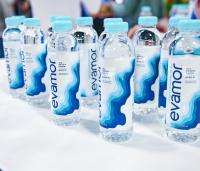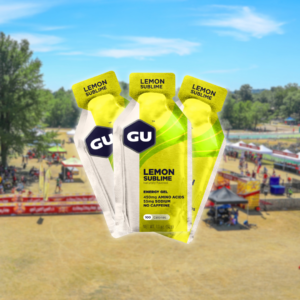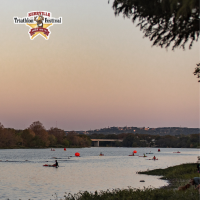 Open water swimming is a unique and exhilarating experience that offers a sense of freedom and connection with nature. However, it can also be intimidating, especially for those accustomed to the controlled environment of a swimming pool. The vastness of open water, the unpredictability of the conditions, and the unfamiliarity with the surroundings can all contribute to a sense of fear. Fortunately, with the right approach and preparation, you can conquer this fear and enjoy the many benefits of open water swimming. Here’s a professional guide to help you get started.
Open water swimming is a unique and exhilarating experience that offers a sense of freedom and connection with nature. However, it can also be intimidating, especially for those accustomed to the controlled environment of a swimming pool. The vastness of open water, the unpredictability of the conditions, and the unfamiliarity with the surroundings can all contribute to a sense of fear. Fortunately, with the right approach and preparation, you can conquer this fear and enjoy the many benefits of open water swimming. Here’s a professional guide to help you get started.
1. Acknowledge and Understand Your Fear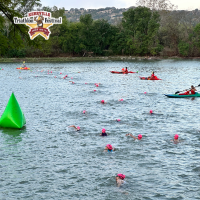
The first step in overcoming any fear is to understand its root causes. Common fears associated with open water swimming include:
- Unknown Depths: The inability to see or touch the bottom can be unsettling.
- Marine Life: The thought of encountering fish, plants, or other marine creatures can cause anxiety.
- Environmental Conditions: Waves, currents, and cold water are often sources of concern.
- Limited Visibility: Murky water can obscure your vision and heighten your sense of vulnerability.
Recognizing these fears as natural and common is the first step towards overcoming them.
2. Gradual Exposure and Building Confidence
Start by swimming in smaller, more controlled open water environments, such as a calm lake or a sheltered bay. These settings are less intimidating and can help you build confidence gradually. As you become more comfortable, you can progress to larger and more challenging bodies of water.
3. Swim with a Companion
Having a swimming buddy can significantly boost your confidence and sense of security. Consider joining a local open water swimming group or club. These communities offer a supportive environment and can provide valuable tips and encouragement.
4. Master Breathing Techniques
Effective breathing techniques are crucial for managing anxiety. Practice rhythmic breathing exercises both on land and in the water. Techniques such as deep belly breathing and controlled exhalation can help you stay calm and focused. Incorporate these exercises into your regular swim training to make them second nature.
5. Equip Yourself with the Right Gear
Investing in the appropriate gear can enhance your comfort and safety:
- Wetsuit: A wetsuit provides buoyancy and thermal insulation, making you feel more secure and warm.
- Brightly Colored Swim Cap: A brightly colored cap increases your visibility to others, enhancing safety.
- High-Quality Goggles: Good goggles improve visibility and protect your eyes from saltwater or chlorinated water.
- Swim Buoy: Greatly increases your visibility to others in the lake, especially to those operating watercraft.
6. Familiarize Yourself with the Environment
Take time to explore and understand the swimming area before getting in the water. Walk along the shore, observe the conditions, and identify any potential hazards. Familiarity with the environment can reduce anxiety and help you feel more in control.
7. Set Achievable Goals
Start with short swim distances and gradually increase them as your confidence grows. Setting realistic and achievable goals for each swim session helps you track your progress and stay motivated.
8. Focus on Technique
Improving your swimming technique can significantly boost your confidence and efficiency in the water. Work on your stroke, body position, and kicking to become a more proficient swimmer. Consider taking lessons or seeking advice from experienced open water swimmers to refine your skills.
9. Visualization and Positive Thinking
Visualization is a powerful tool in overcoming fear. Before your swim, take a few moments to close your eyes and imagine yourself swimming calmly and confidently. Picture the sensation of the water, the rhythm of your strokes, and the sense of accomplishment you’ll feel. Positive visualization can help reduce anxiety and prepare your mind for a successful swim.
10. Maintain a Positive Attitude and Patience
Overcoming the fear of open water swimming is a journey that requires time and perseverance. Stay positive, be patient with yourself, and celebrate each milestone, no matter how small. Remember, every accomplished swimmer started somewhere, and with determination, you too can conquer your fears.
Open water swimming offers a unique and rewarding experience that goes beyond the pool. By understanding your fears, taking gradual steps, and maintaining a positive mindset, you can overcome your anxiety and enjoy the incredible freedom and beauty that open water swimming has to offer.
If you’re gearing up for an event like the Kerrville Triathlon, conquering your fear of open water swimming will not only prepare you for the race but also enhance your overall triathlon experience. Kerrville’s stunning course, with its inviting waters and scenic surroundings, is the perfect setting to put your new skills to the test. Dive in, embrace the adventure, and look forward to the sense of accomplishment that comes with conquering both the open water and the triathlon course. See you at the finish line!

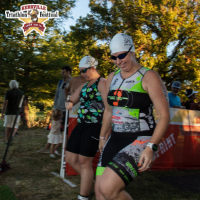
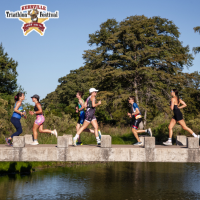 The weekend kicked off with the sold out Kerrville Triathlon Health and Fitness Expo presented by Peterson Health on Friday. Athletes picked up their race packets, checked out the latest gear, and connected with exhibitors. The festival, spanning both Saturday and Sunday, saw races starting with the Rookie and Sprint distances on Saturday, followed by the Quarter and Half Distance events on Sunday.
The weekend kicked off with the sold out Kerrville Triathlon Health and Fitness Expo presented by Peterson Health on Friday. Athletes picked up their race packets, checked out the latest gear, and connected with exhibitors. The festival, spanning both Saturday and Sunday, saw races starting with the Rookie and Sprint distances on Saturday, followed by the Quarter and Half Distance events on Sunday. If you’ve ever found yourself fumbling with shoelaces during a race, you know that every second counts. Enter elastic laces—an often overlooked but incredibly effective tool that can make a world of difference in your performance. But what exactly are elastic laces, and why should you consider swapping your traditional laces for them? Let’s dive in.
If you’ve ever found yourself fumbling with shoelaces during a race, you know that every second counts. Enter elastic laces—an often overlooked but incredibly effective tool that can make a world of difference in your performance. But what exactly are elastic laces, and why should you consider swapping your traditional laces for them? Let’s dive in.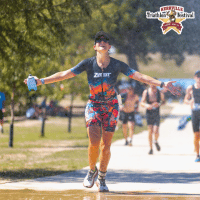 The run segment of the Kerrville Triathlon is where the race is often won or lost. After the swim and bike legs, your legs might be feeling the burn, but this is where you push through. Whether you’re a first-timer or a seasoned triathlete, mastering the run with some Kerrville-specific tips will help you cross that finish line with a smile. Let’s dive into the key do’s and don’ts to ensure your run is as effective and enjoyable as possible.
The run segment of the Kerrville Triathlon is where the race is often won or lost. After the swim and bike legs, your legs might be feeling the burn, but this is where you push through. Whether you’re a first-timer or a seasoned triathlete, mastering the run with some Kerrville-specific tips will help you cross that finish line with a smile. Let’s dive into the key do’s and don’ts to ensure your run is as effective and enjoyable as possible.